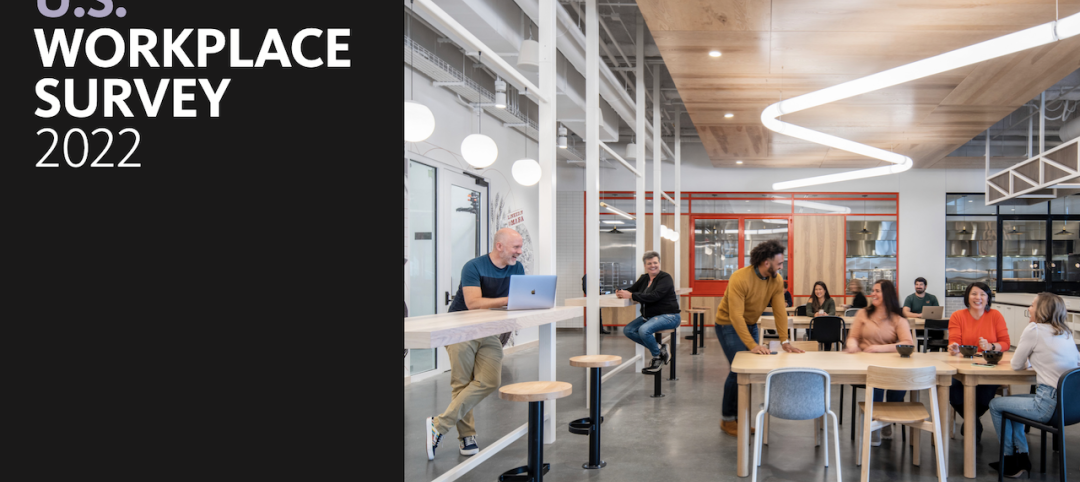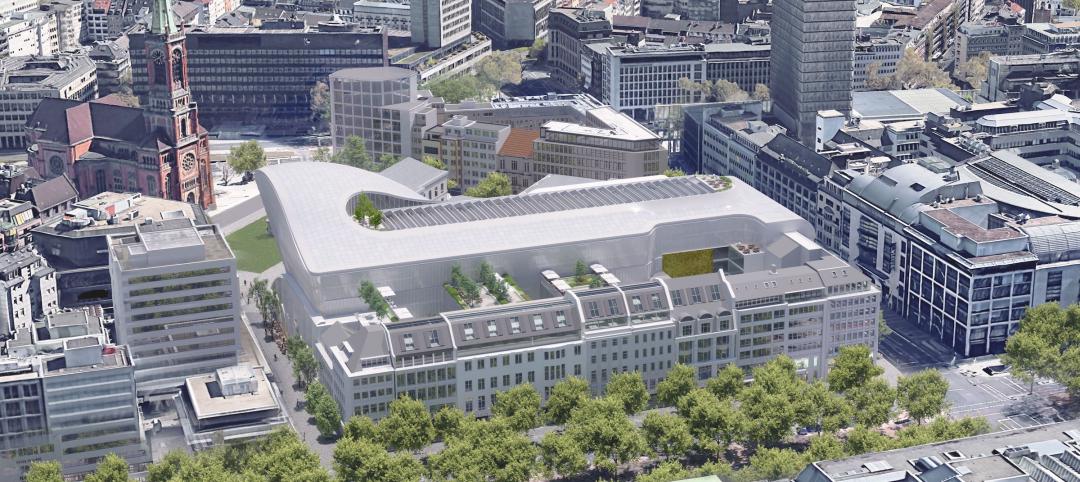1. Ask the hard bottom-line questions first. What is the objective of renovating the building or interior space? Why do it now? What’s the win for the client? What’s the client’s pain point? Who will occupy the space? How will they use it? How will value ultimately be accessed? How can capital investment be minimized and property value maximized? What are the physical and economic barriers to success?
More questions to ponder: Do the existing spaces accommodate the needs of today’s tenants or occupants well? Conversely, does a less than up-to-date facility make this level of change impractical and cost-prohibitive? Are corporate sustainability goals driving the decision to renovate?
Only after you’ve done your homework on these “critical success factors” (which will differ from one job to the next, of course) can you determine if you can produce a successful project for your client.
2. Take a realistic look at the surrounding neighborhood. What “value-perceived” amenities are present today that were not in place when the property first came on the market? “It may be new restaurants, shops, a health facility, or new bus line,” says McCafferty. “In one case, the trees in the area had matured, and they became a huge draw for the project.”
3. Look for local or regional economic incentives. Second-generation buildings may sometimes be offered local tax or financing incentives, particularly deferred property taxes. “Always look for economic development incentives,” says McCafferty. “If they’re available, why shouldn’t your client benefit?”
“In today’s climate, communities are in competition for jobs, jobs, jobs,” says Hudson. “If a building renovation project can attract jobs, you should help your client find those incentive programs and packages.”
4. Develop an exit strategy for the property. What is the highest and best use for the property? If you were to convert the building for adaptive reuse, what would be the best solution for the corporation or a potential buyer? If possible, consider making improvements that will add value later. For example, in a single-owner building renovation, see if adding an appropriately located staircase would allow the building to be converted to multi-tenant use in the future, should the current owner’s business model call for such a change.
5. Create a communication plan for the current occupants. You need to manage tenant expectations by letting the current occupants know about the work schedule—when you’ll be renovating the lobby and the restrooms, what they should expect to see in terms of new finishes or wall coverings, what the plans are for improved lighting, and so on.
6. Capitalize on the building’s strengths. What features made the building attractive when it was brand new? Reframe those strengths to give the property the best possible positioning for today’s market conditions.
“Look at the structure of the building. Does it have good bones?” says McCafferty. “Can you take some walls down to allow more daylight into interior spaces? If it’s a building with eight-foot ceilings, can you do something to increase the floor-to-ceiling height?”
Mirrielees recalls one of Hixson’s biggest reconstruction projects, the headquarters of a Fortune 100 company in downtown Cincinnati. “It’s a triangular building with phenomenal views, but the only ones who could see them were the managers in the private offices. By opening the space, it gave everyone views from almost every direction, and that increased the value of the building.”
7. Determine what features can and should be saved. Prioritize the systems and features that need to be updated. Obviously, each one of these listed items has a cost to the owner/developer on the one hand and a potential value to the future end user/lessee on the other.
“We were renovating a 1970s high-rise in a downtown area with an air exchange rate of nine cfm, which was totally unacceptable, of course,” says Mirrielees. “We used the abandoned mail chutes in the building as vertical shafts to increase the air exchange rate to 20 cfm.”
If mechanical units, system controls, and lobby lighting have recently been replaced or updated, investigate the possibility of seeking an Energy Star rating, which signifies that the building’s energy consumption is below the standard for buildings of its type and size. This tells potential occupants or tenants they can expect generally lower utility expenses than in a conventional building.
8. Enhance the property’s curb appeal and interior finishes. First impressions are crucial to the salability of the finished project. What features make the building memorable from the outside—landscaping, aesthetic appeal, underground executive parking? McCafferty says it’s usually cost-effective to freshen up your signage. For multi-tenant office campuses, planting seasonal flowers and changing them out frequently can attract tenant interest.
Inside, it’s almost always worthwhile to refresh finishes and graphics. Reasonably priced and up-to-date finishes in elevator cabs, toilet rooms, and lobbies are essential. In other common areas, new finishes such as carpet colors and patterns, paint colors, and even ceiling tiles can help freshen and update the property.
9. Have a clear picture of who the potential tenants might be, and design for their needs. “Attorneys still haven’t come out of their private offices, with good reason,” says Mirrielees. “Call centers get you into HVAC issues, because you have so many people per square foot and existing systems just can’t handle the load. Plus, they’re looking for lots of daylighting, parking, and even restrooms.”
Mirrielees says most corporate space is going to 75% open plan, 25% closed office. But that, too, may depend on the type of client, says McCafferty. “When you have a younger company or one that has a lot of Gen Xers or Millennials, they want more open space and daylighting,” she says. “We’ve converted warehouse/manufacturing spaces to office/R&D uses where everyone in the company has the same kind of space and furniture.”
10. Don’t try to do everything at once. Consider a multi-step, phased redesign, rather than tackling the entire property at once. A phased plan provides flexibility in cash flow and financing and greater variety in lease agreements, which can reduce financial risk to the owner or developer.
“If you have only so many dollars to spend, look for the biggest bang for the buck,” says McCafferty. “Do your core spaces and bathrooms with nice finishes—that speaks to all tastes.”
In one case where Hixson converted a distribution center into a corporate office building and R&D center, the client had a clear vision of what to do first. “They did the cafeteria early because everyone was going to use it,” recalls Mirrielees. “That’s a typical corporate scenario.”
For leased space, Hudson recommends against prepping the space for a single tenant or even for a single type of tenant. Instead, set those funds aside for future improvements.
11. Make sustainability part of the process. Achieving LEED certification may not be your client’s goal for the project, but including sustainable elements where feasible usually makes good business sense. “We’re doing more Energy Star buildings than LEED buildings,” says Mirrielees. “We’ve found Energy Star to have more of a return on investment and to be more attainable than LEED-EB.” Whatever the case, an appropriate sustainability message may get your building on the leasing agents’ latest “properties to visit” list.
Looking at the current market for office space, McCafferty acknowledges that property owners are being even more cautious than usual about capital expenditures. “The trend right now is to hold onto your money,” she says. But with labor and materials at favorable prices, she says, now may be the best time to encourage building owners to invest in reconstruction.
Related Stories
Architects | Mar 8, 2023
Is Zoom zapping your zip? Here are two strategies to help creative teams do their best work
Collaborating virtually requires a person to filter out the periphery of their field of vision and focus on the glow of the screen. Zoom fatigue is a well-documented result of our over-reliance on one method of communication to work. We need time for focus work but working in isolation limits creative outcomes and innovations that come from in-person collaboration, write GBBN's Eric Puryear, AIA, and Mandy Woltjer.
Green Renovation | Mar 5, 2023
Dept. of Energy offers $22 million for energy efficiency and building electrification upgrades
The Buildings Upgrade Prize (Buildings UP) sponsored by the U.S. Department of Energy is offering more than $22 million in cash prizes and technical assistance to teams across America. Prize recipients will be selected based on their ideas to accelerate widespread, equitable energy efficiency and building electrification upgrades.
Sustainability | Mar 2, 2023
The next steps for a sustainable, decarbonized future
For building owners and developers, the push to net zero energy and carbon neutrality is no longer an academic discussion.
Industry Research | Mar 2, 2023
Watch: Findings from Gensler's latest workplace survey of 2,000 office workers
Gensler's Janet Pogue McLaurin discusses the findings in the firm's 2022 Workplace Survey, based on responses from more than 2,000 workers in 10 industry sectors.
Seismic Design | Feb 27, 2023
Turkey earthquakes provide lessons for California
Two recent deadly earthquakes in Turkey and Syria offer lessons regarding construction practices and codes for California. Lax building standards were blamed for much of the devastation, including well over 35,000 dead and countless building collapses.
Sports and Recreational Facilities | Feb 27, 2023
New 20,000-seat soccer stadium will anchor neighborhood development in Indianapolis
A new 20,000-seat soccer stadium for United Soccer League’s Indy Eleven will be the centerpiece of a major neighborhood development in Indianapolis. The development will transform the southwest quadrant of downtown Indianapolis by adding more than 600 apartments, 205,000 sf of office space, 197,000 sf for retail space and restaurants, parking garages, a hotel, and public plazas with green space.
Retail Centers | Feb 24, 2023
Santiago Calatrava unveils plans for a luxury retail and office complex in Düsseldorf, Germany
Renowned architect and engineer Santiago Calatrava, along with the CENTRUM Group, has unveiled plans for Calatrava Boulevard, a luxury retail and office complex in Düsseldorf, Germany. Running parallel to Königsallee and connecting with the Steinstrasse station, Calatrava Boulevard will incorporate and connect to the boulevard’s existing buildings.
Reconstruction & Renovation | Feb 16, 2023
Insights from over 300 potential office-to-residential conversions
Research from Gensler finds that, surprisingly, the features that result in an unpleasant office often make for a superlative multifamily product.
High-rise Construction | Feb 15, 2023
Bjarke Ingels' 'leaning towers' concept wins Qianhai Prisma Towers design competition
A pair of sloped high-rises—a 300-meter residential tower and a 250-meter office tower—highlight the Qianhai Prisma Towers development in Qianhai, Shenzhen, China. BIG recently won the design competition for the project.
Office Buildings | Feb 12, 2023
Smyrna Ready Mix’s new office HQ mimics the patterns in the company’s onsite stone quarry
Designed by EOA Architects to showcase various concrete processes and applications, Smyrna Ready Mix's new office headquarters features vertical layering that mimics the patterns in the company’s stone quarry, located on the opposite end of the campus site. The building’s glass and concrete bands are meant to mirror the quarry’s natural contours and striations.

















